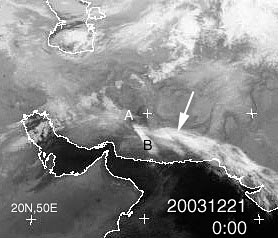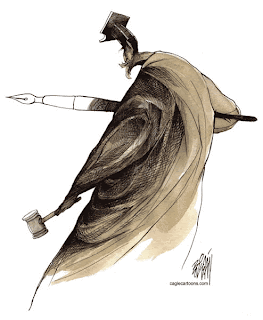
A new solution to the statistics of hard elongated objects
M.Ansari, [0911.5312] (cond.mat/statistical Mechanics)
On: an analytical solution to the statistics of hard elongated objects (e.g. needles, rectangles, ellipses, etc)
Elasticity theory describes how a system under distortion is mechanically deformed. There are two approaches to quantitatively study this. The traditional approach is
to analyze the dislocation of fluid rigid boundaries. Depending on the properties of fluid (e.g. viscosity, compressibility, etc.) a variety of different cases appears.
The other approach, which is of our interest, replaces fluid with discrete objects and studies the short-range interaction between these objects. If the objects are spherically-symmetric, their alignments lead to translational ordered/disordered phases.
Frenkel et.al. in a series of papers developed a method that enables to analyze the stress and elasticity of hard spherically-symmetric objects.
A natural generalization is to replace the spherically-symmetric objects with elongated objects. These objects carry a coupling between their translational and rotational degrees of freedom and display orientational ordered/disordered phases; similar to liquid crystals.
Recently, in a series of papers a formalism for direct calculation of elastic properties of hard non-spherically symmetric objects was proposed by Murat, Kantor, and Farago. They considered hard stiffness for these objects in order to prevent the influence of orientational degrees of freedom into kinetic energy. Their method was
developed on the basis of different types of central and non-central short-range interactions; central potential depends only on the relative distance between particles, whereas noncentral potential depends on individual object orientations.
This formalism has been so far applied in different problems such as the wrapping of proteins in DNA, the ordering of complex liquids systems and percolation transitions, and the jamming transitions.
However, this formalism is hard to be solved analytically and a Monte-Carlo simulation should been used to extract its physical properties. Kantor and Kardar in
proposed a self-consistency check for this formalism in one dimension, where instead of non-spherically symmetric objects, needles are applied. The center of needles
are on a line and the angle of each needle orientation is randomly chosen. They solved this model by transfer matrix method numerically and reported an agreement
between the numerical and MC results.
The purpose of my recent publication is to reconsider elongated objects in one dimension and propose an analytical solution that, in our opinion, goes a step forward since it allows to obtain analytical formulation for some collective properties obtained so far only numerically.
To this end, we eliminate the dependence of free energy on the absolute value of an angle, thus make the orientation completely isotropic.
Interparticle distance and elasticity coefficients are derived into analytical formulations and verify the exact model results of Kardar and Kantor. We generalize our formalism to cover different types of elongated objects and repeat to derive them and verify recent results. This formalism allows to evaluate other properties of the same class, such as inverse distance between needles.
We verify the inverse distance law of sound pressure in high densities. As expected from a previous study on spherically-symmetric object, in needles model the expectation value of inverse distance below a critical pressure does not scale as the inverse of distance.


